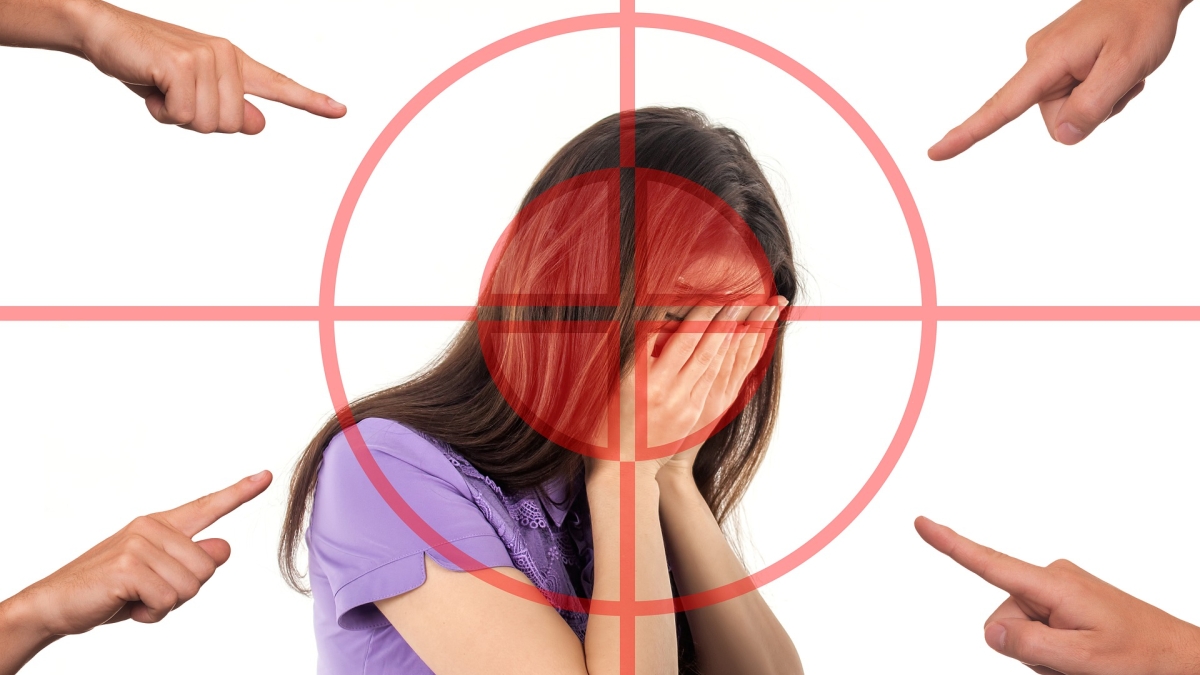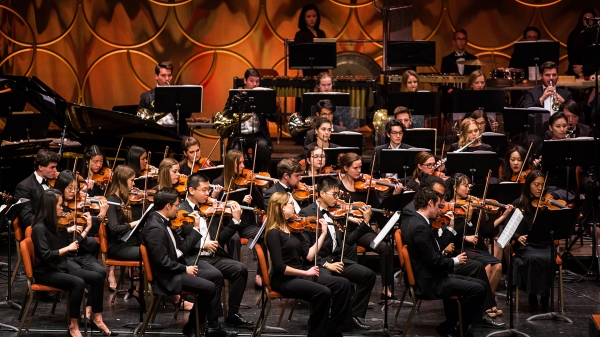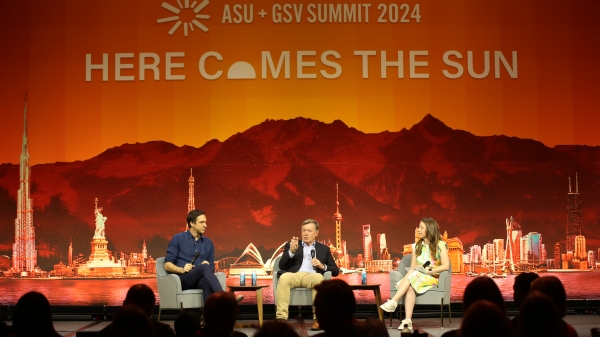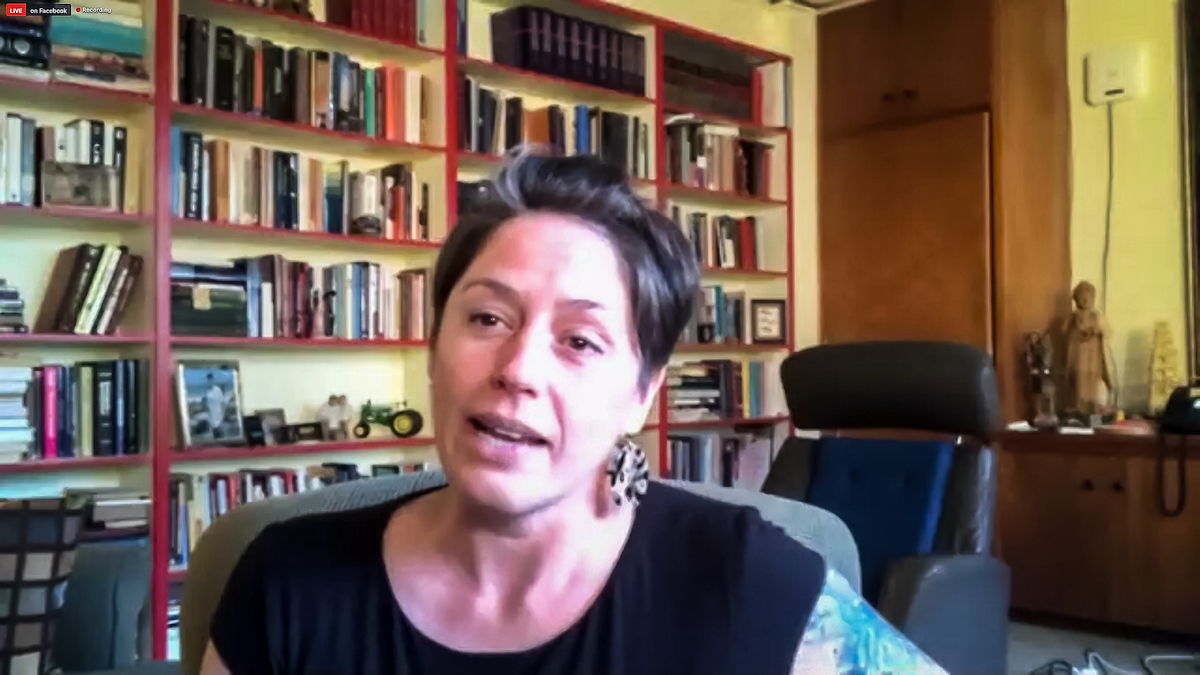The art (and shame) of being ‘called out’
Project Humanities devotes forum to examining social and online phenomenon of holding systems and individuals accountable

Callout culture is a sticky business.
It’s essentially about holding individuals, companies and organizations publicly accountable for perceived racism, sexism, ageism, transphobia, sizeism, ableism, homophobia and other forms of bigotry or bad behavior.
Sometimes it’s very effective, but it can also backfire. It can lead to hostility, or it can turn into an unlikely allyship.
On Tuesday, Arizona State University’s Project Humanities provided a forum at its third live streaming event of the semester to discuss and dissect this practice.
“One of the hallmarks of Project HumanitiesThe award-winning initiative brings together individuals and communities from around Arizona to instill knowledge and promote value in humanities study, research and humanist thought, and public programming. Project Humanities facilitates conversations across diverse communities to build understanding through talking, listening and connecting. is that we intentionally engage in critical conversations about what is happening in the world — the good, bad and the unpretty," said Neal Lester, director and founder of Project Humanities. “We explore what we do not necessarily understand to move ourselves toward greater self-reflection, respect and empathy. These values are part of our Humanity 101 efforts to hold each other and ourselves accountable when it comes to being better people. From my perspective, callout is not a new thing. One might argue that any aspect of protesting a real or perceived wrong is potentially calling out; hence, we have done this kind of interaction and communication before we had this current name for it.”
A pair of panelists discussed issues and raised questions such as: Does being called out alter behavior and thinking? What does “canceling” someone or something mean in actual practice? Is there a way to engage with and learn from callout culture via the lens of self-reflection?
Even defining callout culture proved to be difficult. However, panelists had a much better grasp on how it makes others feel when they’re “called out” and how they frame their responses.
Amira de la Garza, associate professor in the ASU Hugh Downs School of Human Communication. On Tuesday she participated in a livestream event for Project Humanities titled "Callout Culture."
“It arouses our emotions in some way and creates a sense of having to make a decision about what we’re going to say or do,” said panelist Amira de la Garza, an associate professor and Southwest Borderlands Scholar in ASU’s Hugh Downs School of Human Communication. “We become self-conscious because we’re about to put the attention to ourselves … and then to feel like we’re going to be in the public eye in some way or another.”
Panelist ellie hutchison (who prefers to lowercase her name), founding director of la Phoenikera Writers’ Guild who is also seeking ordination through the United Church of Christ, said being called out can be traumatic.
“It’s a negative experience. It feels harsh. You’ve been interrupted in your normal way of thinking,” hutchison said. “Depending on the nature of the callout, it can be somewhat traumatic or at least have some elements of unresolved negative interaction. And I think that is the reason why we recount them; we relive them because that is the way human beings make sense of negative experiences. We tend to relive it until we’re able to process it.”
Often callout culture can morph into a form of public shaming, humiliation or even cancel culture. Panelists discussed comedian Kevin Hart’s homophobic tweets from 2011, the recent memorializing of Kobe Bryant in the face of his 2003 sexual assault case, and 18-year-old white female Keziah Daum, who was accused of cultural appropriation and racism when she posted a tweet of herself wearing a qipao (a traditional Chinese garment) to her high school prom in 2018. The conversation also considered calling out institutions and organizations, and instances when these callouts extend beyond individuals and local boundaries, contributing to policy changes and to broader global social justice causes.
When it comes to individual callouts, the panelists concluded, it does not have to be a form of humiliation if done and received with more intentionality.
“If I’m going to call someone out, in my mind, figure out the way to best approach it. I’ve got to figure out where they’re coming from,” de la Garza said. “A lot of times when I call out, I start by asking a question rather than telling them what they just did. By asking a question, I provide an opportunity for self-reflection or some clarification … I find that usually doesn’t lead to silencing. It might lead to some correcting of behavior.”
Those clashes can sometimes lead to painful encounters, or, hutchinson said, to meaningful relationships. And it often means the change must come from within first.
“As my therapist will say, ‘ellie, you are always going to be the person who calls the emperor out for not wearing clothes.’ Well, that was harmful to me. She was right. I didn’t want to be that person. I didn’t want to carry that load all the time,” hutchison said. “I think I have made a better attempt to be an ally in different groups. A lot of the work I’ve been doing in the past two to three years has been having conversations with folks and how can we improve what being an ally could look like in this situation.”
"Callout Culture" panelist ellie hutchison, founding director of la Phoenikera Writers' Guild, participates via Zoom in a livestream event for Project Humanities.
De la Garza added that she too has turned foes into friends, specifically through abusive comments made to her on social media.
“There are people that I’ve met on Facebook because of calling out interactions where years later, we’re engaged in projects or working on projects together as opposed to lying in bed stinging from the trolls,” she said. “I’ve made allies this way.”
Those who participate in callout culture must also champion compassion, forgiveness and offer the opportunity for self-reflection, the two panelists concluded.
For hutchison, that means asking more questions than offering up a definitive answer.
“I always ask a set of questions: What do we do this for? How do we support somebody? How do I support somebody through the learning process, and how do I want to be supported through the learning process?” hutchison said. “Clothing appropriation has really helped me to see. The size of someone’s earrings or the braid in their hair. Oh, there’s a history behind that? Now let me go learn more about that history. And so I hope to be able to emulate and model that for people I come into contact with.”
The callout culture broadcast can be view in its entirety here.
Top photo illustration courtesy of Pixabay
More Arts, humanities and education

ASU Symphony Orchestra welcomes visionary conductor Jonathan Taylor Rush
Guest conductor Jonathan Taylor Rush will join Arizona State University’s Jason Caslor, director of bands, to lead the ASU Symphony Orchestra in their final concert of the season, “Trailblazers,” on…

Chemistry classes are key to art student's success
Amanda Barnette has a passion for art preservation. That means that, for the past four years, the Arizona State University student’s schedule was filled with classes that fit her artistic bent:…

ASU+GSV Summit tackles big questions about AI, technology, education
Editor's note: We'll be updating this story daily throughout the summit. The annual ASU+GSV Summit kicked off in San Diego on Sunday, drawing thousands of leaders for a four-day event that focuses…

